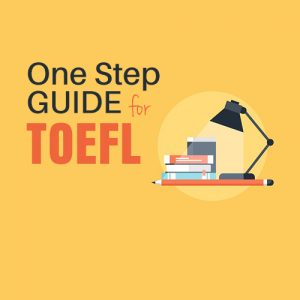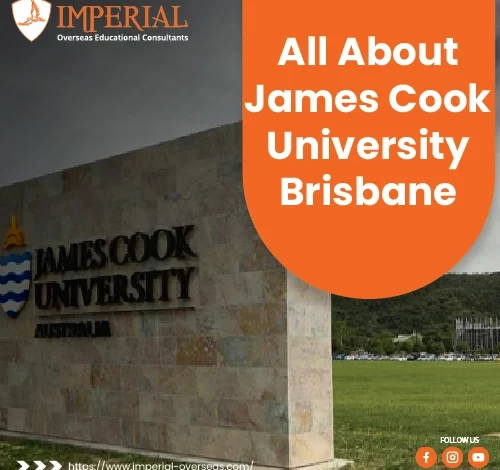A ONE STEP GUIDE FOR TOEFL

As one makes up his/her mind for going for higher education overseas, there arises an acute need to prove your proficiency over the first language of your destined country. Let us now come down to one of the most famous English Language proficiency tests amongst students.
Developed by a non-profit based firm named ETS, TOEFL stands for Test of English as Foreign Language; it is a common platform designed to test and measure varied skills with respect to English language.
Over a period of years, TOEFL is widespread in 180 countries and is attempted by over 27 million students. Since this is an examination which would provide students with a certificate of being efficient in English, it thereby assesses the ability of students to speak and understand English by analyzing on skill sets such as speaking, reading, writing and listening.
TEST FORMAT
The test is an Internet Based TOEFL which was launched in United States on the 24th of September, 2005. The entire test is divided into four sections as follows:
READING:
Reading is a section which would test the student’s ability to understand passages and academic texts. It basically tests your ability in three core areas- reading to find information, basic reading comprehension and reading to learn. Approximately each passage would have about a word count of 700 followed by 12-14 questions related to the text. These passages are divided into different sections and a student can get either a long or a short format. The major sources of these passages are college textbooks and they are expository, argumentative, or historical in nature.
Duration of reading section can go for about 60-80 minutes depending on the kind of format that one receives. This section is graded electronically on the scale of 30.
Types of questions
The most popular types of questions that are asked under Reading are categorized as follows:
Multiple choice questions under which you may get some of the below mentioned questions:
- Vocabulary: It is a type of a question which expects you to select a general synonym for the word highlighted in the passage.
- True-False: This question expects you to answer whether the given statement of true or false.
- Inference: This type of question asks a student to come to a conclusion on the basis of the information provided in the passage.
- Reference: This question requires you to identify a word or a phrase in the given passage that refers to another word or a phrase.
- Detail: This problem asks you to answer a question about a specific point given in the passage.
- Insert: This question expects you to locate a place in the passage where the given statement can be inserted.
- Summary: This question is generally the last question of the reading section wherein a student has to summarize the complete passage by selecting appropriate options from the given options.
LISTENING
Listening section tests a student’s ability to understand spoken English in academic and general settings; typically interactions and academic based speeches on college campuses. These passages are divided into different sections and a student can get either a long or a short format.
Listening includes 4-6 academic lectures that go for about 3–5 minutes individually and 2-3 conversations that approximately go about for 3 minutes each based on the type of the format. Academic lectures can be either professor-only or classroom discussion.
A student will get to listen to the audio only once and may take notes but these notes will be just for the student’s reference and hence will not be graded. Main goals that need to be addressed in listening section are listening to comprehend the basic idea, listening to understand the reason and the purpose of the speaker and lastly listening to understand the flow, interconnection, relationship and recognize the whole idea of the audio to come down to a conclusion.
Duration of listening section can go for about 60-90 minutes depending on the kind of format that one receives. This section is graded electronically on the scale of 30.
Types of questions
Multiple choice questions
- With one correct answer out of four given choices
- With two correct answers out of four given choices
These multiple choice questions would be based on one of the following categories
- Detail: This kind of question asks a student to answer a question about a specific point in the conversation or a lecture.
- Inference: An inference type of question expects a student to come to a conclusion based on information in the conversation or a lecture.
- Pragmatics: This type of question asks a student to comprehend the meaning of what the speaker has said. In some cases, a student may also need to understand the purpose interpreting the meaning of the statement made by the speaker.
SPEAKING
Speaking section measures the ability of the test taker to communicate in English language in an academic or a non academic setting. The entire section of Speaking is divided into six different tasks and has been allotted a total of about 20 minutes for this section.
Speaking of the student will be graded on factors of the fluency of English and also accuracy of the content. Typically, a student would get a response time of about 45-60 seconds each and preparation time of about 15-20 seconds.
Out of the six tasks, two tasks are independent ones while the other four tasks are integrated ones.
- Independent Tasks: A student will independently speak on his/her own opinion, ideas and choices.
- Integrated Tasks: A student would get a mixture of reading a passage, listening to an audio and then giving an appropriate response. This section is graded by human examiners and is graded initially on the scale of 0-4, later converted on a scale of 0-30.
WRITING
As the name suggests, writing section measures a student’s command over his/her writing skills; the entire section is divided into two tasks- Independent and Integrated tasks.
Integrated Task: An integrated task comprises of combination of reading a passage, listening to an audio and then writing a response. Firstly, a student would get a passage and a period of 3 minutes to go through the passage of 230-300 words. Then the student will be provided with an audio for about same time as that of the passage, a student is free to take notes but the notes will not be graded. A typically good response should be between 150-225 words.
Independent Task: In an independent task, a test taker will get a question on the screen that would generally ask him/her to specify his/her opinion on the given topic. You will be given a total of 30 minutes to brainstorm on the given topic and then write the response. A good response will typically range from around 300-350 words.
This section is graded by human examiners and is graded initially on the scale of 0-5, later converted on a scale of 0-30 on the basis of quality of writing in terms of organization, grammar, spelling, vocabulary, accuracy, and development.
With consistent practice coupled with appropriate strategies will surely fetch you with flying colors.
Ms. Sai Dadarkar
Counselor & Trainer



